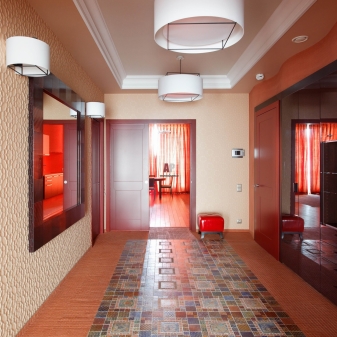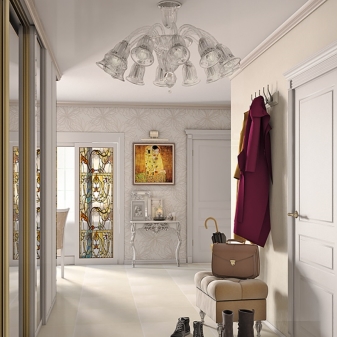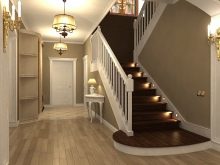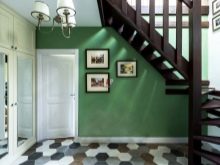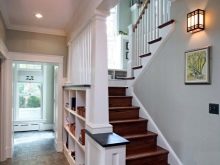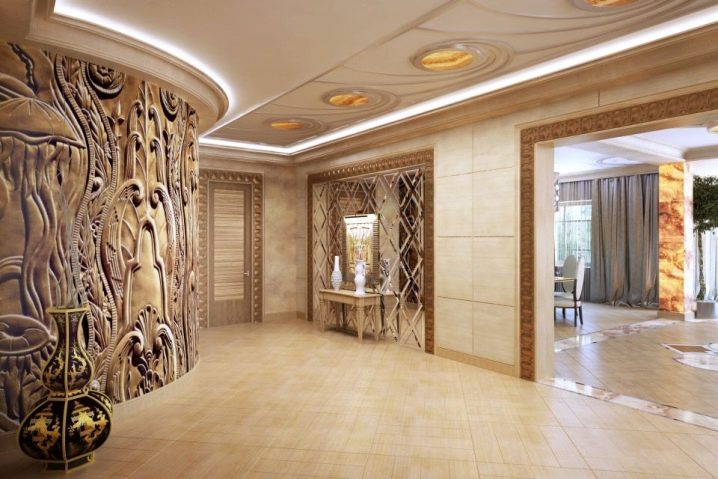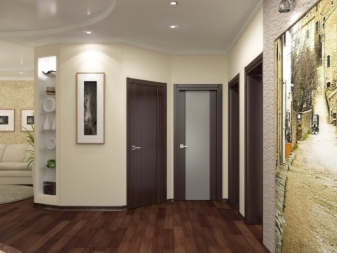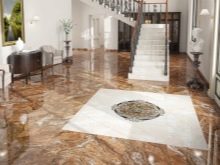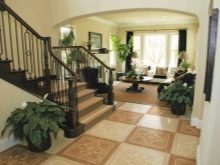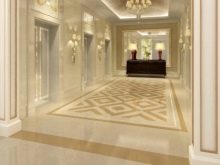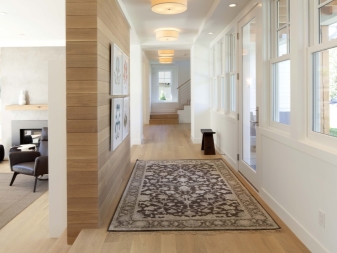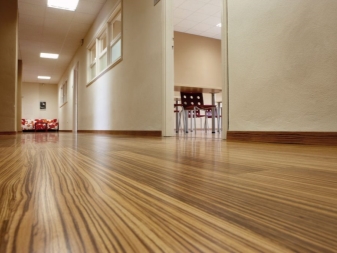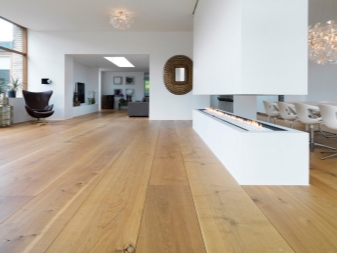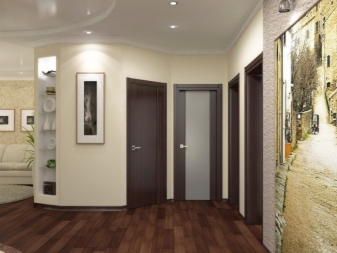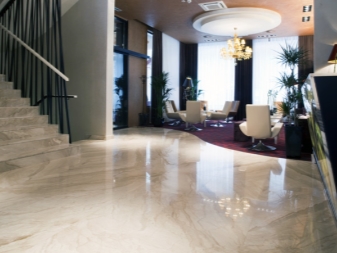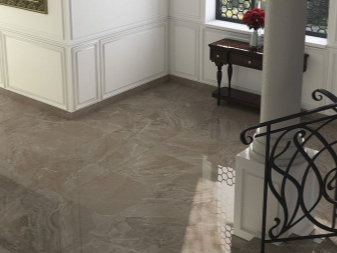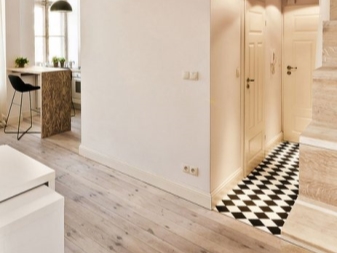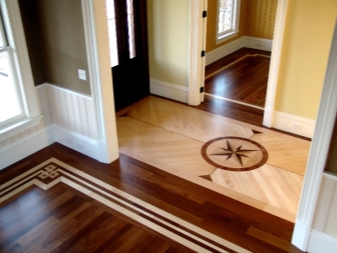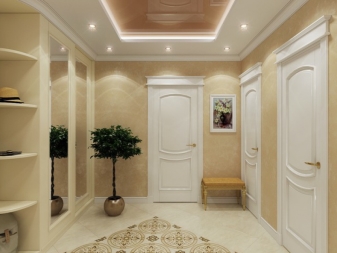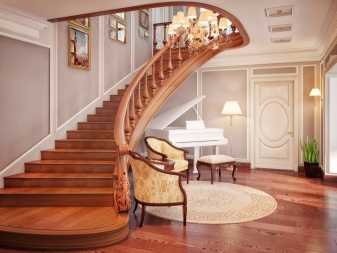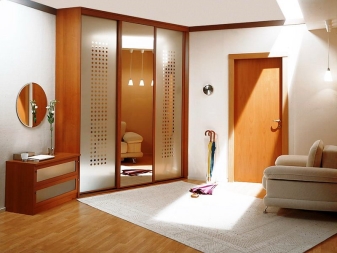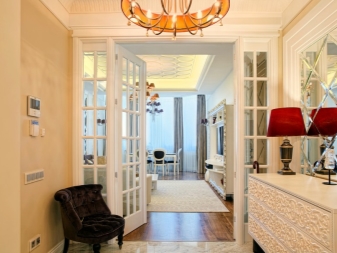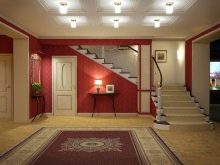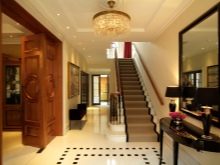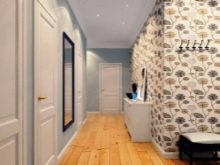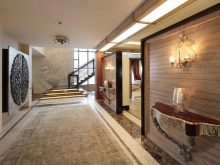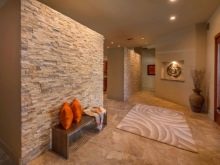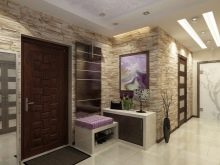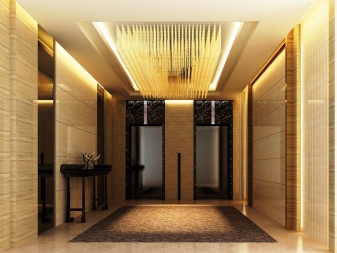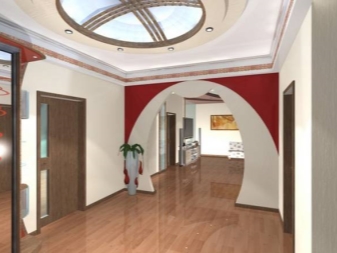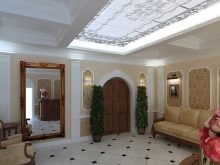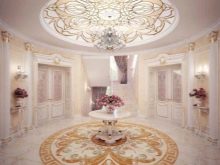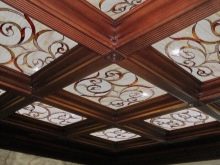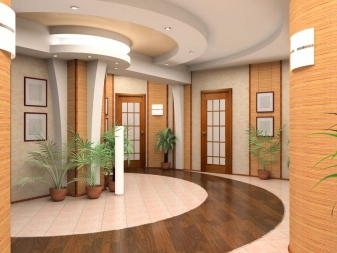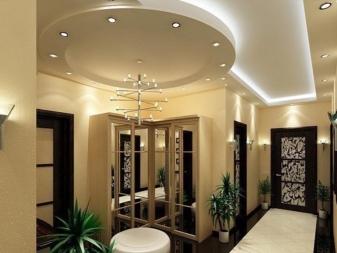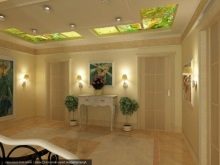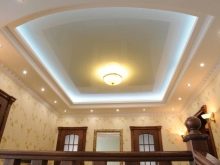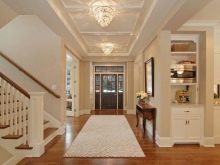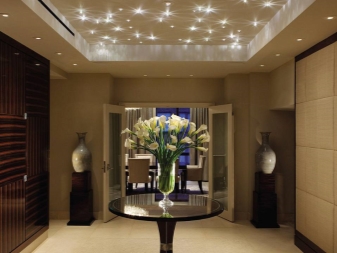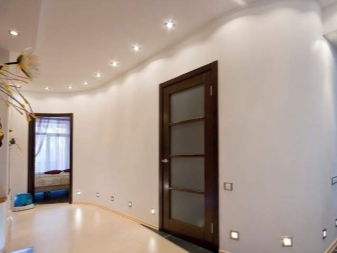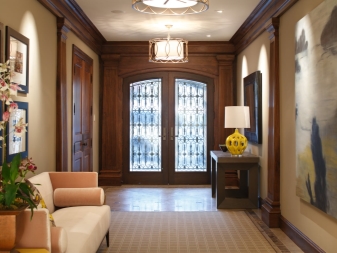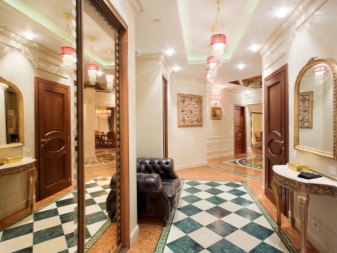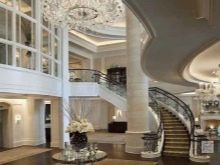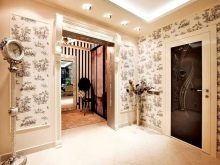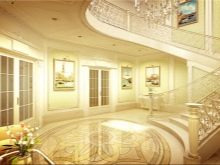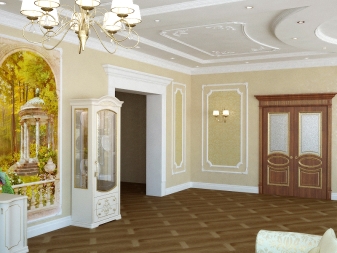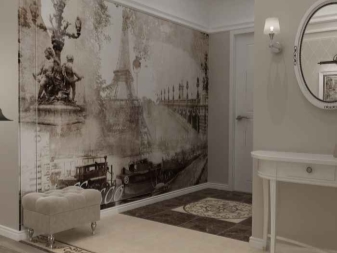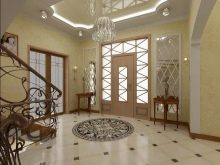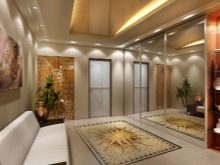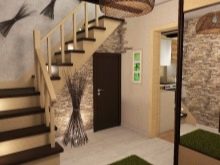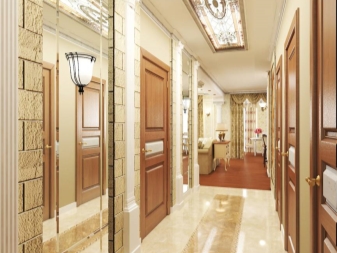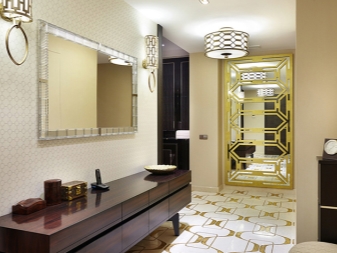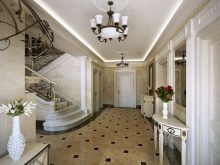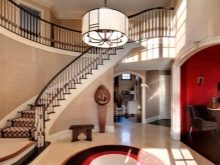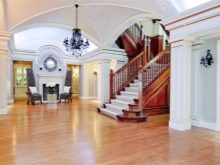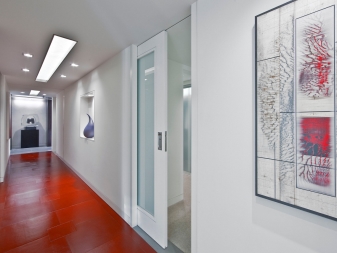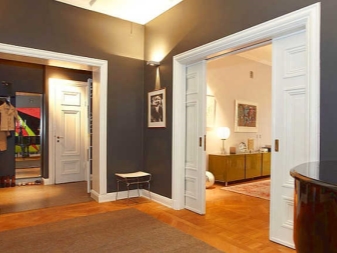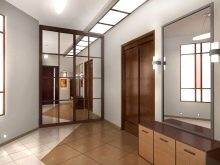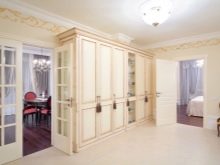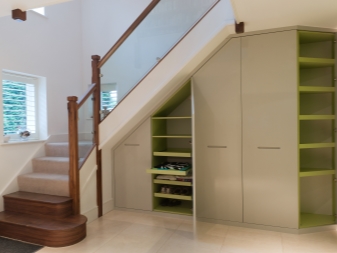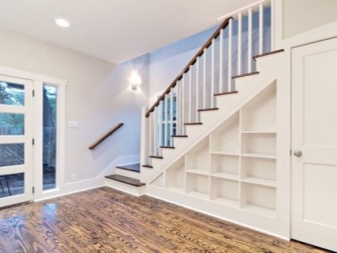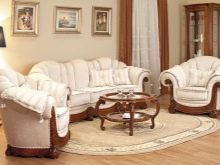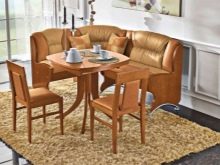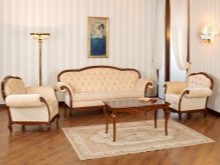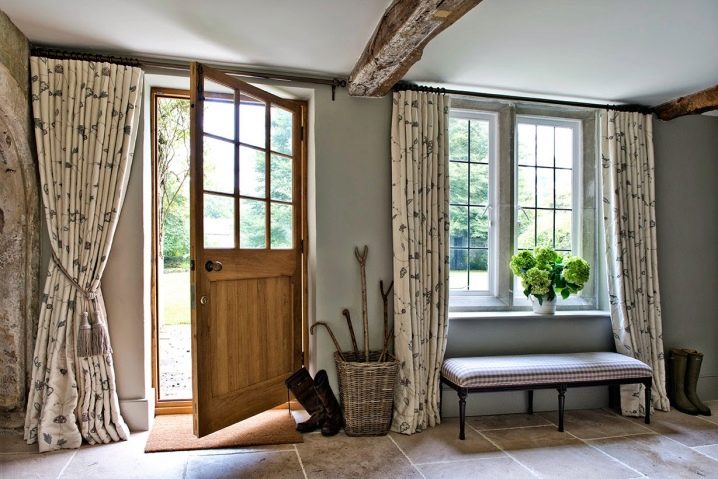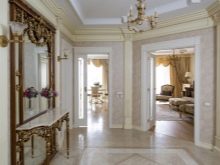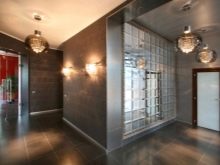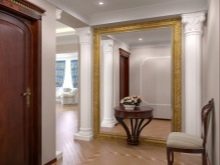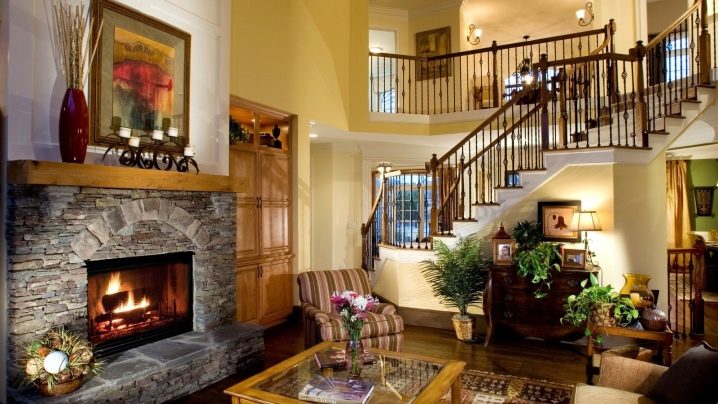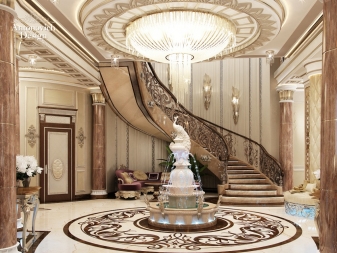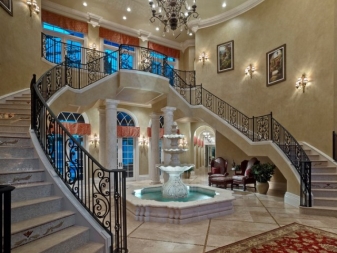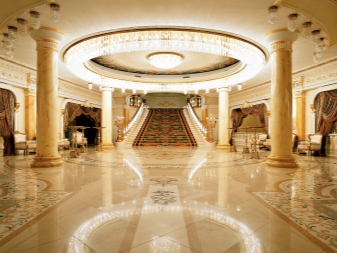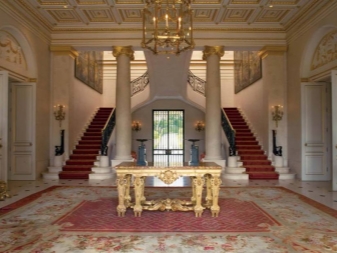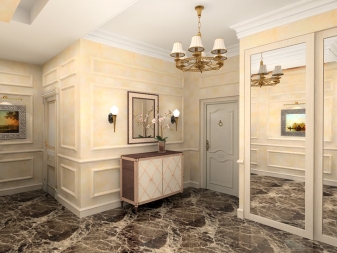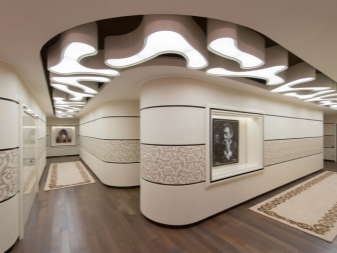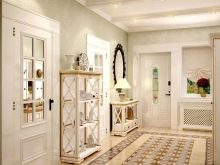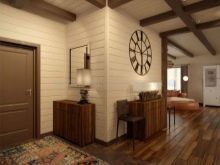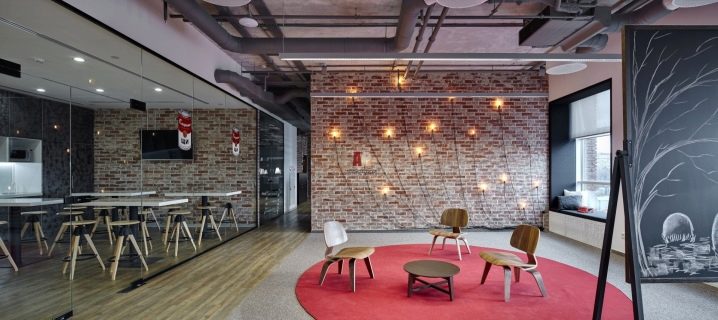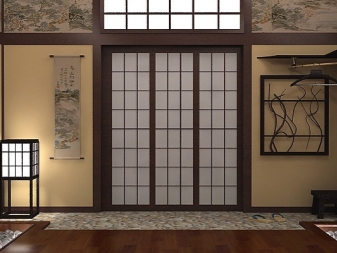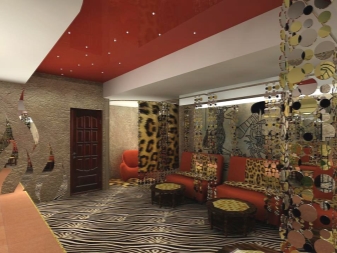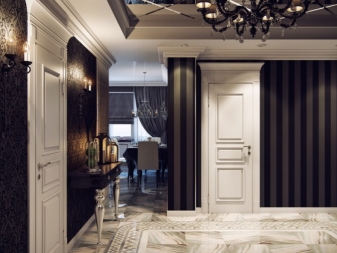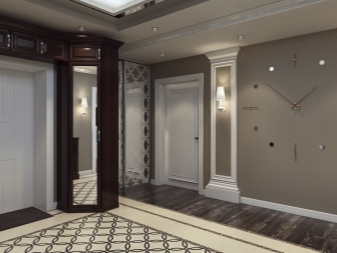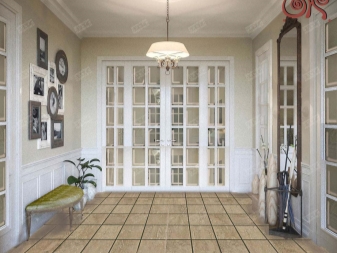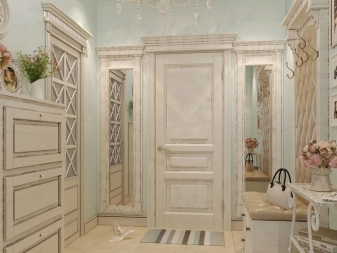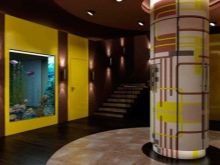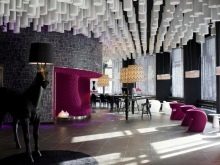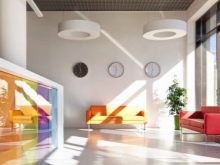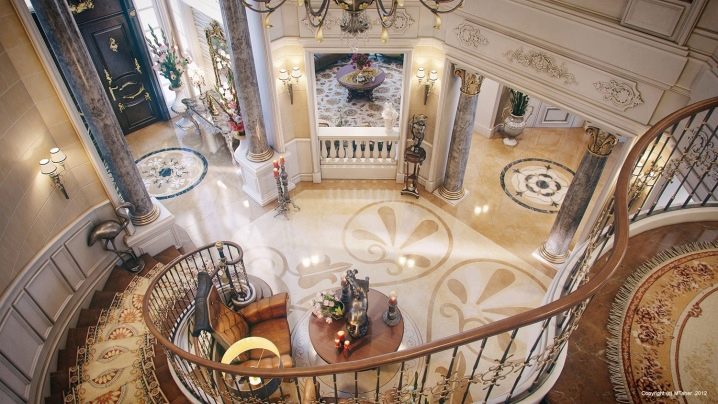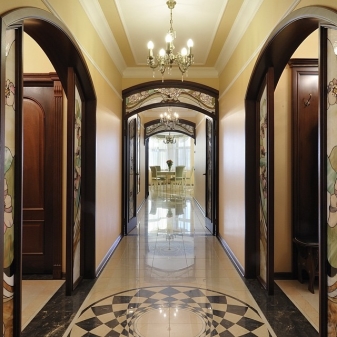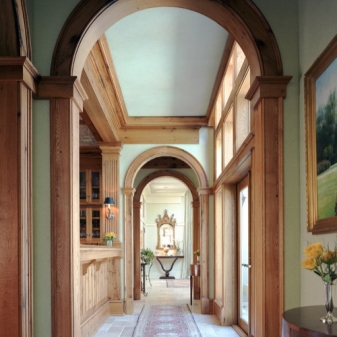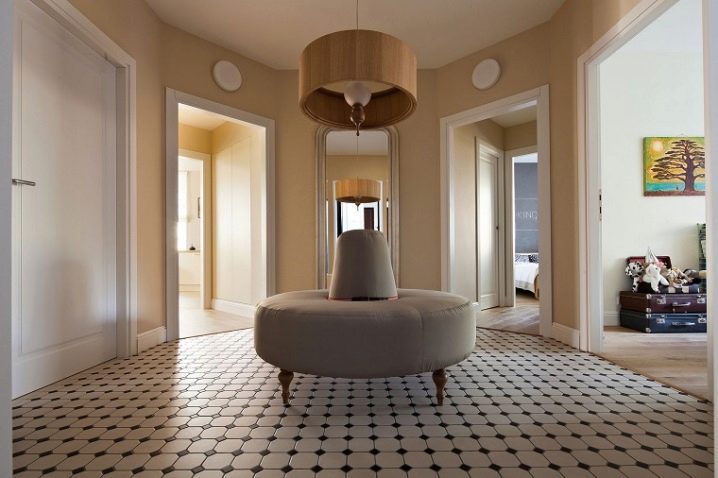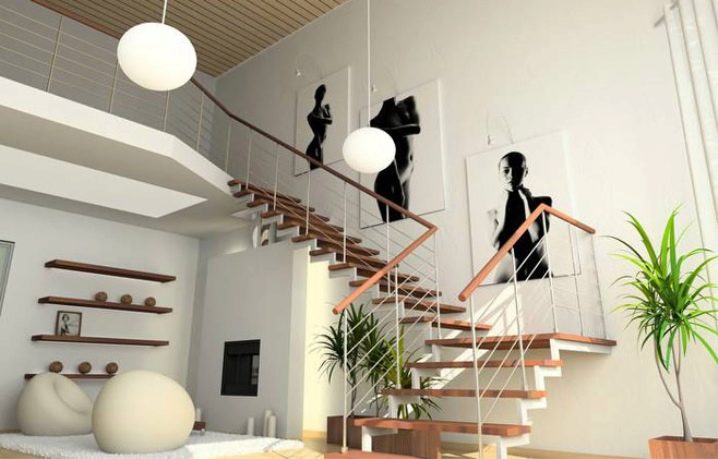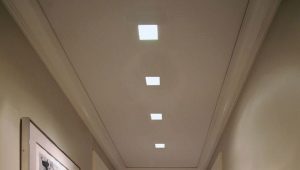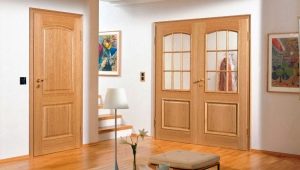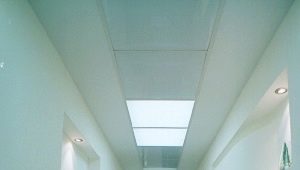Hall design: features of large space
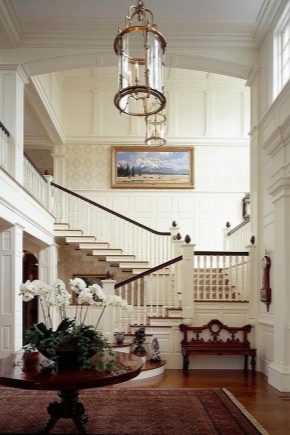
In big houses there are big rooms. Initially, guests and owners of the cottage or mansion fall into the hall. The first impression from the decoration of the house will create this very room, that is why it is so important to take into account the peculiarities of a large space and competently develop a design.
What?
Hall - a common room, as a rule, is a passage that separates the interior of the house, not intended for general use, from the external environment. This is the place where outerwear is left, spend some time waiting, or cross it as a corridor to go to the next rooms. Often the hall is combined with the entrance area, performing the function of the hallway. It can have household items: storage space or dressing rooms.
This often goes the stairs leading to the top floor.This is a special part of the home, which performs many functions and requires a specific design solution.
The hall, being a zone of an entrance and a hall through passage, is exposed to reusable influence on a floor covering and wall panels.
To finish the room, it is necessary to use wear-resistant materials: they should be easy to maintain, due to frequent cleaning from the vicinity of the street or the constant presence of people.
Being the main room, the hall requires aesthetics of interior design. All this can be implemented using modern finishing materials.
Floor, wall and ceiling decoration
The choice of flooring, decor of walls, ceilings, corresponds to the concept of architectural style, which should correspond to the elements of the interior of the hall. If this is a classic, then both the flooring and the decoration of the walls and ceiling should be in this architectural style. For another style, all the components of the finish must also be interconnected. For example, it will be strange to look stucco with gilding on the ceiling with ceramic tiles with a pattern of sea boulders.
It should be noted the advantages of ceramic tiles - most wear-resistant material for the floor. Now there is a huge choice: various textures, colors, from an artificial or natural stone.
Now there is a huge choice: various textures, colors, from an artificial or natural stone. Tile gives the interior solidity, stability, it goes well with various finishes made of metal, wood, stone.
It can be matte or glossy, which adds light to the room, durable and easy to clean.
If the tile clearly organizes the space, then a softer architectural solution - use of wear-resistant laminate. Modern manufacturing techniques allow to extend its service life. A large palette of colors and patterns contributes to the use of laminate in almost any interior. But you need to be ready to replace part or all of the floor in a few years as a result of wear.
For lovers of the classics - natural parquet. Now the wood is processed by the latest technologies, its wear resistance is very high. Wood always ennobles the appearance of the room, gives it a real artistic value, over the years, natural wood acquires a wealth of shades.However, care for such a floor will require some effort.
True luxury in the interior will bring use natural stone - granite, marble and other rocks, but the cost of this type of flooring is the highest.
If the hall combines the functions of the hallway, then it is appropriate to use a combination of different materials: tiles and laminate, tiles and parquet. This allows you to create a durable, easy-care floor space in the entrance area, and a home environment in the main floor space.
The style of the interior dictates the type of wall decoration. If the hall is not sufficiently lit due to the lack of windows, you need to choose light colors.
Doors from other rooms may enter the hall, a staircase may be present, therefore it is better to use no more than two colors, otherwise the room will be visually broken into fragments.
It is necessary to take into account the idea of the architecture of the house. Will it be a separate design space, or do we need a single style with the adjacent rooms to be able to transform the space? In the first case, you can translate your fantasies into reality, and in the second you need to submit to the types of decoration of the neighboring rooms.In some cases, this complex of rooms can be used as a single large space, for example, when receiving guests.
Walls are decorated with wallpaper, textured plaster, painting with or without a pattern. These types of finishes are easily replaced when worn or changing preferences. But they have one drawback - low resistance to external influences: abrasion or wetting of outerwear and other items.
An interesting solution may be the use of artificial or natural stone, it is reliable and durable. Traditional wood trim is also always modern, beautiful and eco-friendly, if the design of other rooms used wooden elements.
In the decoration of the walls can also be combined two or three different finishing materials. The lower part of the walls or door zones can be trimmed with a more wear-resistant material, and an array of walls can be painted or wallpaper-coated.
Ceiling decoration, as well as the floor and walls, must obey a single architectural focus of the interior design of the house. If the hall is organized as a separate design room, then the ceiling should correspond to the finish of the floor and walls.If there is a shiny component in the material of the walls and the floor (marble or glossy panels on the walls), you can safely use the gloss on the ceiling, and, on the contrary, when the muted matte finish of the room on the ceiling is also desirable to withstand a dull effect.
The ceilings can be completely varied in their production: painted, stretched, pasted over with tiles, with the use of moldings and moldings, painted and plain, sheathed in wood.
Incredibly beautifully artistically executed stained glass ceilings in illuminated ceiling lights. If daylight is not available, then in this case a lighting system is created between the slab and the stained glass itself.
Ceilings can be performed in one level or in several. Multilevel ceilings are made either from gypsum board, or using the technology of stretch ceilings. And those and others have their advantages. Stretch ceilings are easy to maintain. Drywall allows you to give vent to fantasy and create quite complex surface reliefs. This material can be the basis for the decoration of the ceiling with different materials: stone, tile, stucco.Painting and gilding fit well on such a surface.
Lighting
A significant role in the design of the ceiling ceiling lighting plays. Often, when constructing multi-layered ceilings, each level is illuminated with spotlights or LED strips. Each cascade has a separate output to the switch, which allows you to create different degrees of illumination in the hall, depending on the time of day.
Often the hall is used as a hall for the start of ceremonial events, then a massive chandelier will be appropriate, which can be supported by similar wall sconces. It should be borne in mind that within the same room and types of lighting must match and complement each other. It is also necessary to take into account, if the hall is connected with the adjacent rooms by arches, then the lighting of all adjacent rooms should be in the same artistic key.
Colors
When choosing the color scheme of the hall decoration, it is better to focus on solid light or beige colors, since in this room there is often not enough natural lighting.
In bright colors it is better to arrange wall panels or use wallpaper.
The lack of sunlight makes undesirable the use of gray, brown or green colors. This makes the room dark.Now white has gained great popularity, having a huge number of shades from cold snow-white to warm peach tones.
Forms and sizes
It is worth considering separately the organization of space in the hall. Often there are several doors, a staircase, a hall can be of a corridor type or, conversely, a square, wide, large-sized room with a height of two, and sometimes even more floors. In each case, the approach to the design of the room will be different.
In a narrow room, you can zone the space at the entrance and the hall using a combination of flooring, location of lamps and interior items.
For example, at the entrance to the hall lay the floor tiles, and for the main room to use other finishing materials. This will visually divide the long room into several parts, making it less elongated.
Large width of the room also needs to be divided into zones, here you can already diversify the colors and brightness of the decor. It is important to try not to clutter up the interior with many details.
The presence of several doors leading to the hall obliges them to have the same design.In modern layouts, the hall may be a conditional part of the common space of the house, here sliding doors and transforming room partitions will be appropriate.
Furniture arrangement
The decor and interior decoration of the hall depend on the purpose of this room in the house. If in the hall you need to create storage space, then fit built-in wardrobes with sliding doors. Cabinets are desirable to withstand in the color of the walls, then they will not look like independent furniture, but will become part of the common space. If the hall is narrow, then it is desirable to install doors on the mirror cabinets, this will visually widen the distance between the walls.
Storage space can be arranged under the stair design, this will mask the boring set of shelves and hangers.
If there is a separate dressing room in the entrance area, a small coat hanger for outdoor clothing, outdoor shoes and an umbrella stand, as well as a couch for pereobuvaniya, is sufficient. This small complex can be separated into a separate zone, or it can become supporting the overall concept of the room.
The hall, which is used as a reception room, needs to be equipped with a seating area: it will be nice to install chairs, sofas, and small tables for a comfortable pastime.
Curtains and accessories
Curtains and draperies can be a bright accent in the room. The curtains will give comfort and help to combine the disparate details: the windows in the lobby and the windows on the stairs are decorated with the same curtains with lambrequins or with the same gold pickups.
The color of the curtains must be chosen to match the color of the upholstery of the furniture or walls.
Paintings, sculptures and decorative elements kept in the same style will decorate the interior, but you need to remember - their number should correspond to the area of the room.
Placement of mirrors gives completeness to the room. This is necessary for the convenience of visitors and is used to create additional, reflected space. Mirrors should be well lit with natural or artificial light. The mirror can be one or several identical, located in a symmetric order. In the hall it should not be small. Often, large mirrors are placed on the first flight of stairs, visible from the front door - this creates the effect of infinity in space and adds grandeur to the room.
The fireplace with artificial or live fire will greatly decorate the interior, it will give warmth and comfort, especially if you get into the room in cold weather.A fireplace can become a central piece of interior, and it is important to use such finishing materials that will match the design of the house.
Often, a decorative fountain is installed in the hall, its murmur refreshes and pacifies. You can choose any style of the fountain: from the luxurious baroque to the hard lines of minimalism.
Styles
A small guide to styles in interior design will be extremely necessary to determine preferences in the choice of interior decoration and furniture:
- Luxurious furniture inlaid or carved, upholstered in velvet, gilded walls and ceilings on ceiling moldings, paintings in gilded frames, mirrors, predominance of white or red colors are symbols of classical styles Baroque, Empire, Art Nouveau, Gothic. These are the so-called palace styles. Here we need large areas, good room prospects and a small amount of furniture made of natural wood.
- Ethnic direction in interior design is the opposite of the classics. The use of natural materials, many fabrics, a lot of “handmaid”, sometimes deliberate aging of colors characterize styles. Provence and Country.
- The complete lack of decor, simple lines, white color - this is Scandinavian style.
- Details will help to get closer to the hot days of summer Mediterranean style: white textured plaster, ceramic floor tiles, light colors.
- Industrial design is created in style loft using the technical equipment of the infrastructure of the house as design objects: pipes, bare brick, pieces of concrete, graffiti, mostly gray, brown colors with the attraction of one or two large bright interior items.
- Animal prints, wooden statues, wicker furniture, yellow-brown scale - signs african style. White and brown, the almost complete lack of furniture - Japanese style, from the situation only the most functional.
- Elite materials of decoration, functionality and clear purpose of each item, smooth lines, expensive technological innovations and valuable antiques, causing combinations of black and gold colors - this is the style Art Deco.
- The attributes of Provence only in the modern version will create an atmosphere of decadence, reverie, memories of the past - these are ornate interior items,elements of a certain sophistication, multi-layered curtains, a lot of beige color, furniture painted in pastel colors, soft flower prints - style chebbi chic.
- One of the most difficult styles in design is avant-garde. Many bright colors, combinations of different materials, very energetic. Metal, plastic, glossy surfaces, spacious rooms free from things, functionality and cosmic colors characterize the high-tech style.
Beautiful interior design
Knowledge of the laws of organizing space and matching architectural styles will help create an original and stylish interior in a three-room apartment, in a country house, in a cottage, and in a one-story wooden house, to create beautiful and spectacular accents on the stairs when climbing to the second floor of a private house.
A large and chic hall, made in the Empire style, looks like a chic hall. This style supports exquisite stucco, expensive carpets, luxurious chandeliers and sconces, as well as the fundamental columns of marble.
A hall in a multi-room apartment can advantageously open up new spaces, thanks to a cascade of arches, and thus bring it into the living room, dining room or recreation room.
Round space can be arranged in the center of the same form of furniture items.
Fans of minimalism will appreciate the non-flashy pastel colors, with a predominance of white, and monochrome interior elements.
You can design your own. How to make a design project using a 3D-model, see below.
